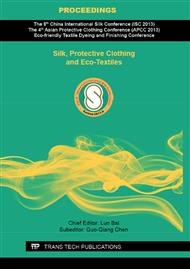p.447
p.450
p.454
p.458
p.462
p.468
p.474
p.484
p.488
Research on Building the Preference Model of Seamless Badminton Sportswear Based on the Conjoint Analysis
Abstract:
Conjoint analysis is a method for estimating the relative importance of product attributes and utilities of different levels of a defined product. This research focused on finding out about the concerned attributes and preferable levels of professional badminton sportswear when purchasing and then building the preference models of seamless badminton sportswear. Two questionnaire surveys had been done in this research. Questionnaire I is the basis for getting the top ten attributes that target customers concerns when purchasing. Combined the top ten attributes with development direction, questionnaire II was designed for conjoint analysis study. Totally 20 respondents willing to buy professional badminton sportswear were asked to give his/her purchase intent score for 18 hypothetical product profiles derived from orthogonal design. As results of conjoint analysis study showed, the most preferred levels are light color, tight fitness, raglan sleeve, seamless-knit, good tactility, good moisture absorption and ¥299~400. The preference model of seamless badminton sportswear can be two kinds: relatively higher price and relatively lower price. They all have good cost performance and the relatively higher kind has good moisture absorption and good tactility, the relatively lower kind has preferable good moisture plus anti-bacteria and preferably tactility.
Info:
Periodical:
Pages:
462-467
Citation:
Online since:
September 2013
Price:
Сopyright:
© 2013 Trans Tech Publications Ltd. All Rights Reserved
Share:
Citation:


